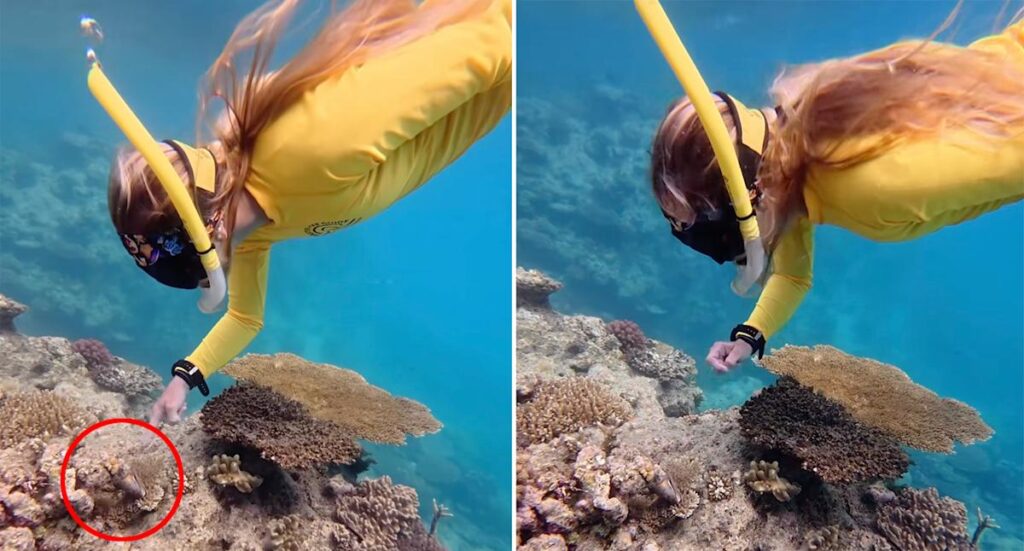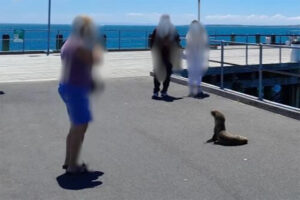
BREAKING: A snorkeller has spotted one of the world’s deadliest creatures while swimming off the Frankston Islands in the Cairns Great Barrier Reef region. This seemingly harmless shell, known as a cone snail, is prompting urgent warnings from marine experts about the dangers posed to swimmers and beachgoers.
Marine authorities confirm that the venom of certain cone snail species can be lethal, with fatalities occurring within just hours if stung. Andy Ratter, a Master Reef Guide for Frankland Islands Reef Cruises, emphasizes the critical advice: “The only danger is if you touch them or pick them up,” highlighting that the powerful sting can penetrate clothing and wetsuits.
There are over 130 species of cone snails in the reef, each with varying levels of toxicity. While some stings feel similar to a bee sting, others can have severe effects. The notorious geographer cone, or ‘cigarette cone shell,’ is known for its deadly reputation; victims reportedly have only the time to smoke one last cigarette before succumbing, although this is an exaggeration, as expert Catherine Logan clarifies that the actual time frame can be between one and five hours.
Cone snails are “aggressive predators,” using a specialized harpoon-like tooth to deliver venom with the speed of a bullet. This hunting mechanism allows them to quickly incapacitate prey, making them a fascinating yet dangerous part of the marine ecosystem. “There is no ‘safe’ area to pick it up,” warns Logan, as the snail’s proboscis can extend to ensure a successful strike.
Beachgoers are advised to exercise extreme caution around washed-up cone shells, as they may still contain live snails. Ratter advises anyone who encounters a cone shell to maintain a safe distance and refrain from picking it up. “Many species have very pretty shells, which makes this tempting,” he cautions.
Despite their lethal potential, deaths from cone snail stings remain rare, with only around 30 fatalities reported globally. Ratter urges visitors to the reef to avoid touching any marine life, reiterating the mantra: “You may harm them, or they may harm you.” The delicate coral reef ecosystem is easily disrupted, and a multitude of seemingly innocuous creatures can cause injury.
As this story develops, beachgoers and snorkellers are reminded to stay vigilant and respect the natural habitat. The Great Barrier Reef remains a stunning yet unpredictable environment, and safety measures are paramount for all who venture into its waters.
For ongoing updates, follow us on Facebook, Instagram, TikTok, Twitter, and YouTube. Do you have a story tip? Email us at [email protected].






